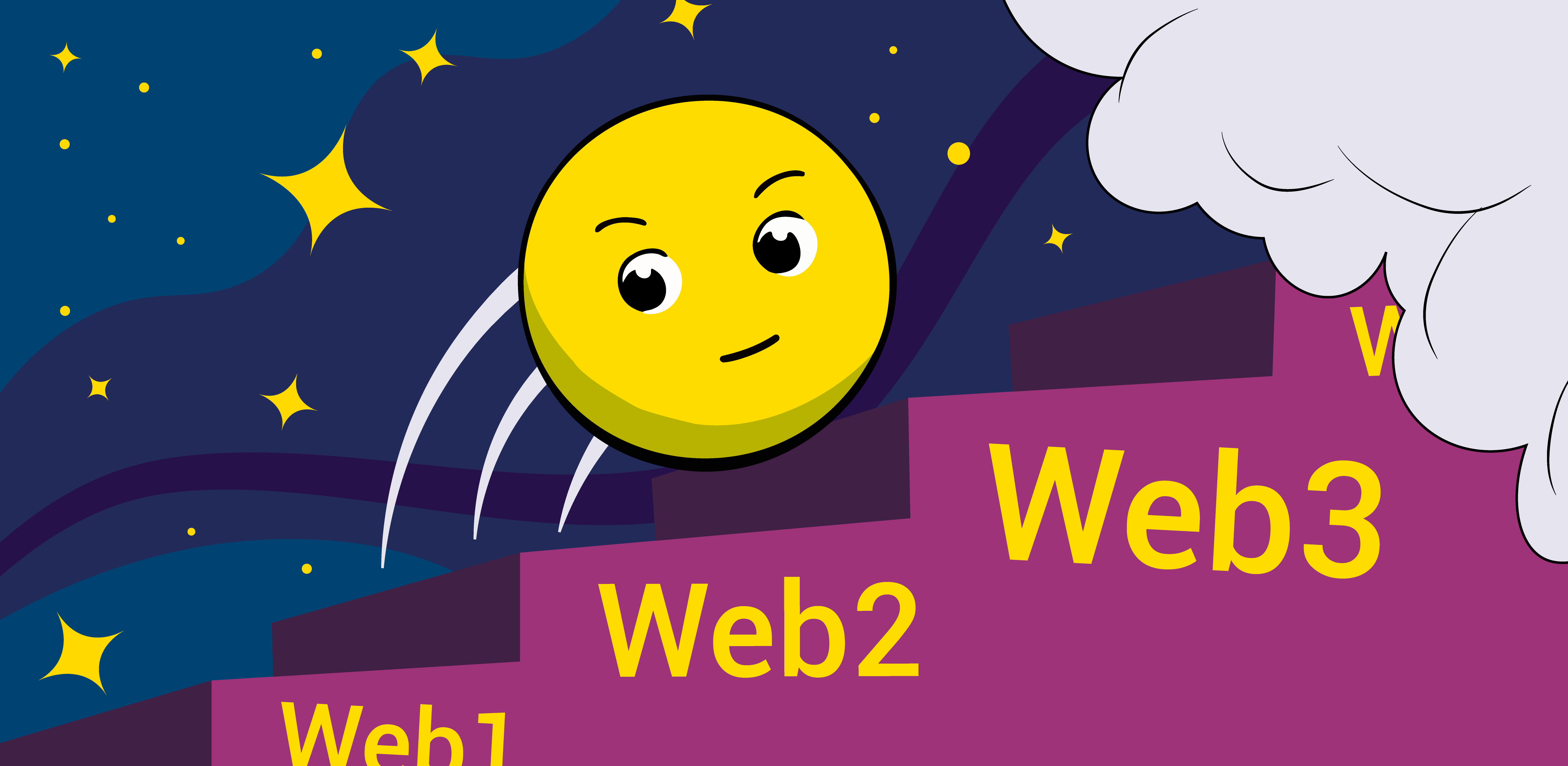
Web3 is the concept of a new stage in the development of the Internet, the basics of which are decentralization, blockchain-based work, and the economy of tokens.
So far, there has been no complete transition to a new stage in the evolution of the web, and it seemed that it would take more years. However, now we are already on the verge of a completely new concept of the Internet.
Evolution of Web3
There are a few details that we need to remember when studying Web3. First, the concept is not new. Jeffrey Zeldman, one of the first developers of Web1 and 2, wrote a blog post about his support for Web3 back in 2006. And conversations on this topic began back in 2001.
The Internet is not something stable or an end product. Over the past decades, it has undergone several stages of change. For a better understanding of technologies, let's consider the features of each:
What is Web1?
Web1 was the first iteration of the web. Most of the participants were content consumers, and the creators tended to be developers who created websites containing information submitted primarily in text or graphic format. Web1 lasted from about 1991 to 2004.
Web1 consisted of sites serving static content instead of dynamic HTML. Data and content were provided from a static file system rather than a database, and sites didn’t have much interactivity.
What is Web2?
We can say that most of us have encountered the Internet in its current form of Web2 (or Web 2.0 as it used to be called often). Advances in web technologies such as Javascript, HTML5, and CSS3 have made it possible to create interactive and social web platforms like YouTube, Facebook, or Wikipedia. At this stage, it is not at all necessary to be a developer to participate in the creation process. If you have an idea — or anything at all, — you can project it and share it with the world. However, the downside of this broader online engagement is that by creating content, users also provide personal information and data to the companies that control those platforms. This leads to the following issues:
Security and Privacy
The exploitation and centralization of user data are the basis of the functioning of the Internet, as we know it and use it today.
In Web2 applications, you have no control over your data or how it is stored. There are constant data leaks. Moreover, companies often track and store personal user data without their consent. All of this data is then owned and controlled by the companies responsible for these platforms.
Censorship
Despite the fact that Web2 is the Internet for users, absolute freedom cannot be found here. Centralization is reflected in all areas, be it social networks, search systems, or even operating systems. Each application has its own content permission policy, e.g. the browser will issue "correct" information and ads, or YouTube can declare a ban for an unwanted statement.
Monetization of Apps
At first, many software companies are not worried about monetization. They focus solely on growing and attracting new users, but ultimately they have to start making a profit. Think about the time when LinkedIn, YouTube, or Instagram were freshly baked: how much have they changed? For many Web2 companies like Google, Facebook, Twitter, and others, more data leads to more personalized ads. This leads to more clicks and ultimately more ad revenue.
All this indicates the imperfection of today's web.
Benefits of Web3
The obvious plus of Web3 is decentralization, but this is not the only advantage. For example, all interactions and all data on the network can be tokenized. This allows:
- marking content so that it is unique. This will allow you to fight numerous copies of the same information, it is easier to find the original source and save time in search of original content;
- taking advantage of new online earning opportunities. This applies both to receiving fees from authors of articles, videos, etc., and to reward users for watching and reading content only.
- maintaining privacy on the network. Content creation doesn’t require the provision of personal data.
- increasing the overall speed of the network. A multisite network makes it possible by sharing the power of its devices with other users.
Web3 applications do not exist on the same server but work either on the blockchain or in decentralized networks of many peers — nodes. At the same time, modern blockchains allow you to deploy nodes and manage them for everyone. Such applications are called dApps. As an example, we can name the Theta network — a service for creating, publishing and exchanging video content. In this network, content is stored in nodes, and users can even share part of the power of their device, receiving native network tokens for this.
There is also the IPFS (InterPlanetary File System) project — a decentralized open-source file-sharing network. A network is a peer-to-peer communication protocol, that is, a communication protocol without any central authority (server).
Summing up, we can speak about the following advantages of decentralized internet:
- lack of central apps regulation;
- accordingly, less censorship and more freedom in user speech;
- higher fault tolerance, since applications are located in decentralized nodes — they are almost impossible to hack and they do not depend on the operation of one physical server:
- the ability to monetize its presence on the network, both for application operators and for the users themselves.
Blockchain and Web3
As Web3 networks will operate through decentralized protocols and foundational blocks of blockchain and cryptocurrency technology, we can expect strong convergence and symbiotic relationships between these three technologies and other areas. They will be functionally compatible, easily integrated, and automated through smart contracts, and will be used to deliver anything from microtransactions, censored P2P-resistant data storage, as Filecoin suggests, to a complete change in familiar company management and business practices.
Who created/is creating Web3?
As with previous versions, Web3 is not a single-creator product. This is the joint work of people and organizations. In general, you can say this: those who participate in blockchain crypto projects such as Ethereum, EOS, and TRON are recognized as leaders in the field of Web3.
One of them, Gavin Wood, is the co-founder and chief technology officer of Ethereum and the creator of Polkadot and Kusama. Dr. Wood developed and directed the Solidity language for writing smart contacts and created the Web3 Foundation, whose main goals are "delivering Web 3.0, a decentralized and fair internet where users control their own data, identity and destiny" and "to nurture cutting-edge applications for decentralized web software protocols".
Future of Internet
The future of the Internet is clearly planned. It is already happening and we are already dealing with its evolved forms based on blockchain. The concept of a decentralized web is very promising, but it will take time to implement it. And the point is not only in the development of technologies and capacities but in its participants. Yes, more and more people are captivated by the decentralized meta world, but many will need time to get used to greater integration of the Internet into our lives, with it earning complete trust. However, this is obviously inevitable.

